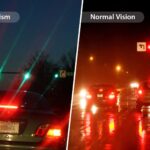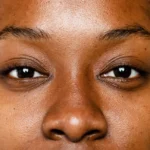Deaf-blindess is a combination of sight and hearing loss that affects a person’s ability to communicate, access information and get around. It’s also sometimes called “dual sensory loss” or “multi-sensory impairment”. A deaf blind person won’t usually be totally deaf and totally blind, but both senses will be reduced enough to cause significant difficulties in everyday life. These problems can occur even if hearing loss and visions are mild, as the two senses work together and one would usually help compensate for loss of the other. Deaf-blindness most commonly affects older adults, although it can affect people of all ages including babies and young children. In older people, it may develop gradually and the person themselves may not understand their vision and/or hearing is getting worse at first. Signs like difficulty following a conversation, needing to turn up the volume on the television or radio, asking others to speak loudly, slowly and more clearly, not hearing noises such as knock on the door and so many more.
CAUSES OF DEAFBLINDNESS
There are more than 70 causes if deaf-blindness but I’d just highlight four important ones, starting with
- Charge Syndrome which is a pattern of birth deflects that affects many areas of the body such as the heart, genitals, eyes and ears, amongst other areas. CHARGE is an abbreviation for several of the features common in the disorder: coloboma, heart defects, atresia choanae (also known as choanal atresia), growth retardation, genital abnormalities, and ear abnormalities.
- Usher Syndrome is a condition characterized by partial or total hearing loss and vision loss that worsens over time. The hearing loss is classified as sensorineural, which means that it is caused by abnormalities of the inner ear. The loss of vision is caused by an eye disease called retinitis pigmentosa, which affects the layer of light-sensitive tissue at the back of the eye (the retina). Three major types, I, II, and III, have been identified.
- Down Syndrome is a chromosomal condition associated with intellectual disability, a characteristic facial appearance, and weak muscle tone in infancy. All affected individuals experience cognitive delays, but the intellectual disability is usually mild to moderate. Individuals with Down syndrome have an increased risk of hearing and vision problems and a variety of birth defects.
- Stickler Syndrome is a group of hereditary conditions characterized by a distinctive facial appearance, eye abnormalities, hearing loss, and joint problems. These signs and symptoms vary widely among individuals. The hearing loss may be sensorineural, meaning that it results from changes in the inner ear, or conductive, meaning that it is caused by abnormalities of the middle ear. Eye conditions include severe nearsightedness, glaucoma, cataracts, and retinal detachment.
Note; If someone already has either a hearing or vision problem, it’s important to look out for signs that suggest the other sense may be getting worse too. If you’re too worried about a friend or family member, please encourage them to speak to their GP.



